
Table of contents:
- How to wash and bleach tulle or curtains at home
- Keeping your home clean is part of your health care
- Methods for cleaning curtains and tulles
- How to wash tulle by hand: general rules
- Features of machine wash
- How to whiten at home
- Heat treatment and washing features of certain types of fabrics
- Methods for cleaning tulle from soot and soot after a fire
- What to do if the tulle fabric shrinks after washing
- Advice on how to iron products without an iron
- Author Bailey Albertson [email protected].
- Public 2023-12-17 12:53.
- Last modified 2025-06-01 07:32.
How to wash and bleach tulle or curtains at home

An important element of modern home decor is tulle and curtains. Caring for fabrics made of natural and synthetic, white and colored fibers, requires the housewives to know the intricacies of taking care of keeping the products clean. How can you wash and bleach them at home? How to deal with pollution using traditional and folk methods, defeat grayness and yellowness, stains, make tulle products shine and sparkle again, and please the owners?
Content
- 1 Keeping your home clean is part of your health care
- 2 Techniques for cleaning curtains and tulles
- 3 How to wash tulle by hand: general rules
- 4 Features of machine wash
-
5 How to whiten at home
-
5.1 Fight grayness with bleach
- 5.1.1 Chlorine bleach.
- 5.1.2 Oxygenated bleaches.
- 5.2 Removing spots
-
5.3 Fighting for whiteness using folk methods
- 5.3.1 Digestion
- 5.3.2 Zelenka
- 5.3.3 Hydrogen peroxide and ammonia solution
- 5.3.4 Potassium permanganate
- 5.3.5 Linen soda
- 5.3.6 Blue
- 5.3.7 Laundry soap
- 5.3.8 Starch
- 5.3.9 Aspirin
-
-
6 Heat treatment and washing features of certain types of fabrics
- 6.1 Organza
- 6.2 Capron
- 6.3 Chiffon
- 6.4 Veil
- 6.5 Taffeta
- 6.6 Cotton
- 6.7 Nylon
- 6.8 Silk
- 6.9 Linen
- 6.10 How to restore whiteness to an old tulle
- 7 Methods for cleaning tulle from soot and soot after a fire
- 8 What to do if the tulle fabric shrinks after washing
- 9 Advice on how to iron products without an iron
Keeping your home clean is part of your health care
Tulle is a special element of home interior decor. White and colored, translucent, airy, smooth and patterned. Tulle got its name in honor of the French city of the same name. Over time, many new materials and design solutions have appeared, but housewives prefer tulle. This fabric guarantees a free exchange of energy between the interior of the house and the external environment. The perfection of style, creative concept is emphasized by curtains, drapes and curtains. Our home is a living organism. Therefore, cleanliness is important for maintaining a healthy atmosphere, mood and well-being. Keeping your home clean is part of your health care. A tidy house is a center of comfort and warmth.

Snow-white tulle in the interior
Over time, snow-white products become gray, dull and dusty, acquire a yellowish tint, fade. Dust settles on textile fabrics, stains appear. Regular care will remove unwanted dust, and washing will help remove dirt, return the fabrics an attractive look, restore freshness, and preserve the splendor of the products. It is not difficult to do this, observing the subtleties of caring for the cleanliness of the home decoration, show sincere concern for the health of the inhabitants.
Methods for cleaning curtains and tulles
Airing is a simple and affordable method for everyone to clean and clean textiles. A window or door ajar for a while will saturate the atmosphere of the house with energy, the fragrance of purity. Heavy curtains can be shaken out on the street.
Vacuuming is suitable for thick curtains. Use a special attachment for this, so as not to spoil the fabric with a hard brush. If the nozzle is not included with the vacuum cleaner, wrap the brush with a thin cloth and fix it with an elastic band. Remember to clean the window side of the curtains as well. Frequency - twice a month.
But over time, it is possible to return a fresh look and whiteness to curtains and tulle products only with the help of washing. It is impossible to unequivocally answer the question about the frequency of washing: in the kitchen and in houses located on the streets with busy traffic, it is necessary to wash frequently, where there is less dust - 2-3 times a year.
How to wash tulle by hand: general rules
If you do not use washing powder, I recommend using a homemade gel - non-toxic, safe for health, which is important. Pour 2 liters of water into a saucepan, put on fire. Pour 10 tbsp into boiling water. l. grated laundry soap. Stir until dissolved. Throw 5 tbsp into the container. l. soda ash. Stir the composition again until thickened. Turn off the fire. Cool the mixture. It remains to scent with perfumes that you do not use, or essential oils. One bottle (5 ml) is required. For 2 kg of washing you need 2 tbsp. l. gel.
Use the tips for hand washing:
- Be sure to shake off the tulle or curtains first to remove any dust on the surface of the garments.
- When washing artificial materials, observe the temperature regime.
- Soak the tulle in lukewarm water, after dissolving soap or soda there.
- Effectively softens water, removes dirt and yellowness salt (do not take purified iodized). Soak the linens in saline solution for two hours or preferably overnight (8 tablespoons of salt per 10 liters of water). Salt removes dirt easily. Rinse the garments and wash with detergents - a solution of detergent powder or gel, rinse again.
- You should not give up modern whitening products. Bleaching agents effectively refresh and cleanse, return white color. Take note: oxygenated bleaches are safer. Soak the cloth in the solution and follow the instructions.
- A light solution of blue or brilliant green in water will return sparkling whiteness.
- Adding vinegar to the rinse water will add sparkle to the tulle.
- To keep the fabric softer and less electrifying, add conditioner.
- Do not twist and rub the fabric intensively.
- Spread and dry the canvases.
Features of machine wash
Household appliances of our time facilitate the work of a housewife. Cleaning, lightening, removing stains are performed by machines instead of humans. When choosing this method of keeping it clean, follow these guidelines:
- Take care of the delicate wash cycle. Neatly folded fabric, fits in a laundry bag or white cotton pillowcase. Such packaging will prevent fraying of edges and rupture of thin elements;
- It is preferable to use a liquid detergent or concentrated special detergents for washing curtains, tulles;
- It is forbidden to use substances containing chlorine;
- Oxygenated bleach is a versatile product that preserves fabric. We buy, read the manual and use it boldly;
- You can put 2 tablespoons of salt into the compartment together with the washing powder. This will help to lighten the fabric during the wash phase;
- Tulle bleaching is also possible with the help of 10 tablets of hydrogen peroxide (put the powder in the compartment of the washing machine and set the gentle wash mode);
- To spin, select the minimum number of revolutions.
If you doubt the safety of washing, it is better to entrust the cleaning to professionals.

Modern automatic machines can significantly facilitate the work of the hostess
How to whiten at home
Fight grayness with bleach
Laundry detergents on the household chemicals market contain bleach - chlorine or oxygen. Sometimes optical brighteners are added to the powder - special fluorescent particles that settle on the fabric and enhance the whiteness effect. Oxygenated bleach is gentle on fabrics and people, does not provoke allergies and other side effects. If an optical brightener is specified in the powder, then only light-colored fabrics can be washed with this detergent.
But sometimes the dirt is so strong that you need a special bleach. Make your choice based on a comparison of the advantages and disadvantages of the species.
Chlorine bleaches
Pros: bleaching even in cold water, easy dosage, disinfection.
Cons: used only for linen and cotton fabrics, strong unpleasant odor, constant use causes changes in the structure of the material, fabrics quickly lose their original appearance.
Oxygenated bleaches
Pros: assortment (liquid, powdery, concentrated), used for white and multi-colored fabrics (viscose, nylon, silk and others); disinfected and applied in a washing machine together with synthetic detergents.
Cons: Shelf life, allergic and dissolves in hot water.
Removing spots
The stain remover is intended for local use. Consume in small areas and do not exceed the recommended holding time. Stain removers are divided into household and chemical products (liquid, powder, stain remover pencils, sprays, special anti-stain soap). The main rule is to deal with the stain immediately. Otherwise, the contamination will penetrate into the fabric structure.
When choosing chemicals, you must carefully read the instructions: for which types of fabrics the stain remover is suitable, what removes. Modern oxygen-containing stain removers remove food stains, ballpoint pens, juices, greenery, iodine. But again - read the instructions! When in doubt, test in a hidden area.
Home remedies for stain removal.
| Fat | Sprinkle with talcum or chalk, leave until morning, then shake off |
| Juice | Wash without detergent in cool water. If not gone, put a sponge moistened with vinegar on the dirt and leave for a quarter of an hour and wash. Neutralize odor with baking soda |
| Paint | Soak a stick wrapped in cotton wool in a nail polish remover (no acetone) and wipe the stain with it |
| Hair dye | Mix hydrogen peroxide with the same amount of ammonia. Dab the stain with a piece of cloth. Attention! Not suitable for colored fabrics! |
| PVA glue (polyvinyl acetate emulsion) | Wash in warm water or remove with a cotton pad soaked in vinegar or vodka |
| Stationery glue | Wash in warm water with a baking soda detergent |
| Glue "Moment" | Moisten cotton wool in solvent or refined gasoline, wipe |
| Oil | Mix 4 parts vinegar with 1 part salt, apply, wait 10-15 minutes, wash with detergent |
We fight for whiteness using folk methods
If for some reason you are not satisfied with washing powders (you care about environmental friendliness or you are allergic), I recommend resorting to proven folk remedies. They are harmless, inexpensive and successfully used in everyday life.
Digestion
In the memory of a large number of people, a picture has been preserved: mom stands at the stove and boils linen in a huge tank in order to achieve impeccable whiteness and cleanliness. Digestion still effectively removes impurities in our time. It is applied to tulle textiles, curtains made of natural materials: cotton, linen. Enameled or galvanized dishes are suitable for this, without damage, completely clean. For maximum results and greater efficiency, add detergent aids. For example - grate laundry soap, wait until it is completely dissolved by stirring and add baking soda. If the degree of contamination of the laundry is not high, then it is enough to take half a glass of baking soda and a glass of soap for every 2 liters of water. For old stains the concentration should be increased.
Zelenka
A brilliant result in the renewal of washed items is ensured by using a brilliant green solution. Enough 10 drops on a full basin of water to restore the original freshness and whiteness of curtains with yellowness. Hold them for about 3 minutes, constantly turning them over. Wring out without twisting, hang up, let it dry.
Hydrogen peroxide and ammonia solution
Add 1 tbsp to 10 liters of hot, about 60 degrees, water. a spoonful of ammonia and 2 tbsp. tablespoons of 3% hydrogen peroxide. Mix thoroughly. Dip the curtains and hold for about half an hour. Then rinse, squeeze lightly, spread out to dry.
Potassium permanganate
Pour a few potassium permanganate crystals into hot water to achieve a rich pink hue. Tip: Wait for the component to completely disperse. Lather the tulle in clean water and place in a container with potassium permanganate for 30 minutes to 3 hours. Remains to rinse.
Linen soda
At home, in the role of an auxiliary substance, it is useful to resort to this affordable and simple method. The tulle curtain should be soaked in advance. You will need 100 grams of powdered detergent and 2 tablespoons of baking soda for 8-10 liters of water. Wait for the ingredients to dissolve, immerse the curtains in the mixture for 20 minutes. Wash and dry as usual.
Blue
Among the used and available methods of whitening is blue. After hand wash, place the washed tulle in blue water. Remember: completely dissolving the blue will help prevent stains and uneven staining of the fabric. One cap for ten liters of water and - goodbye to dullness.
Laundry soap
After rubbing, boil the laundry soap with water. Add cold water. Hold the curtain with yellow spots in the solution for at least 5 hours. Hand wash and rinse thoroughly several times.
Starch
Will give some stiffness, shape to white and colored curtains, curtains starch. First, it is stirred in cold water and added to a bowl of warm water (5 teaspoons per 5 liters of water). The concentration can vary depending on how much tissue you want to achieve. After the end of the main wash, the fabric must be rinsed and starch treated. This treatment is not recommended for dark fabrics and fully synthetic (nylon, polyester).
Aspirin
To soak white tulle, take 5-8 aspirin tablets and dissolve in 7 liters of water. Submerge the product there. More convenient - at night. Do your laundry in the morning.
Heat treatment and washing features of certain types of fabrics
| Material | Permissible processing temperature |
| Velours | 30 degrees |
| Viscose | 30 degrees |
| Acetate | 70 degrees |
| Polyamide | 40 degrees |
| Polyacryl | 30 degrees |
| Polyester | 40 degrees |
Organza

Use in decor
Thin and delicate fabric, perfectly transmits sunlight into the house, creates a uniquely amazing play of sunlight. What do owners of tulles and curtains made of airy textiles need to know? Firstly, the fabric becomes wavy from hot wet steam; secondly, it does not tolerate contact with hot water; thirdly, the use of industrial bleach is not desirable; fourthly, excellent cleaning results can be achieved with affordable, proven methods. Bleaching of organza will be provided by primary soaking in salt water, ammonia, addition of hydrogen peroxide (two tablespoons of peroxide, one tablespoon of ammonia, five liters of water), and starching.
Nylon

Sparkling white nylon
Ultra-durable, durable artificial material. Looks decorative, does not lend itself to dirt for a long time. No ironing required. They clean the nylon in non-hot water. He easily tolerates a delicate wash cycle. Of the above-mentioned bleaching agents, greenery, blue or potassium permanganate, a solution with salt and a starch solution are recommended during washing and rinsing.
Chiffon

Noble beauty
Chiffon curtains look sophisticated and noble. They should be washed by hand, keeping the temperature and choosing an appropriate detergent. When resorting to bleaching, use the recipe: dilute 2 tablespoons of hydrogen peroxide and 1 tablespoon of ammonia in 10 liters of warm water. Place the cleaned item in the mixture for 20-30 minutes. Rinse.
Veil

Delicate textiles
For the production of veils, wool, cotton, silk or polyester yarns are used. It looks elegant and sophisticated in the interior, but fades over time. The industry offers white, dyed and printed fabric. Sometimes embroidery adorns the front side. By printing or chemical etching, a pattern is created. Then two types of fibers are combined in matter. Veils require hand or gentle machine wash at a temperature not exceeding 30 degrees. It is not recommended to use chlorine bleach. Iron at moderate temperature using a cloth pad. Discard dry cleaning. An aqueous solution of peroxide and ammonia will help to restore whiteness.
Taffeta

Iridescent shine
Products on the consumer market are made from synthetic or natural ingredients. The structure of the fabric is dense and tough. Has a characteristic iridescent shine. The fabric, processed in a special way, acquires the properties of a chameleon, changes its shade depending on the angle of view. For taffeta products, hand wash at 30 degrees with a mild detergent is practiced. Beware: curling leads to deformation of the fabric, folds cannot be smoothed out even with ironing.
Cotton

Cotton curtain
The production of cotton products is based on environmentally friendly raw materials. The undoubted advantage and advantage of cotton is the ability to "breathe", let the air pass through, and is hypoallergenic. Not picky about washing, especially 100% from natural threads without synthetics. Allowable temperature - up to 60 degrees, it is allowed to use oxygen bleach and some chlorine for white fabrics. High spin speed is the norm. Drying in the machine is applied only to those things where there is a manufacturer's recommendation. It will allow you to return the dazzling snow-whiteness to a gray, yellowish tulle by soaking before the main wash in salt water (2 tablespoons of salt per 2 liters of water). The maximum permissible exposure temperature is 40-45 degrees.
Nylon

Use in room design
Human made fiber, 100% artificial, made of synthetic filaments, soft, easy to drape. Easily erased. It is easy to look after him, but be sure to consider some of the subtleties.
- Decorate rooms out of direct sunlight that can fade nylon.
- Please observe the previous recommendations for washing synthetic items (especially temperature conditions).
- Avoid using chlorine-based bleaching products.
- Wash white items separately from colored items.
- Add blue while rinsing and this will improve the shade of light fabrics, refreshing them.
- Do not leave in the machine after cleaning: remove when finished.
- Avoid using automatic dryers.
- Do not dry near heaters.
Silk

Graceful beauty
Silk curtains and curtains look great and will decorate any interior with dignity. Taking care of their durability and preservation, wash by hand with liquid detergent or using a dishwashing balm at a temperature of about 30 degrees. Do not spin in a centrifuge. Avoid drying in direct sunlight and near batteries. It is recommended to dry in the shade.
Linen
Linen curtains are made of natural natural materials, environmentally friendly, hypoallergenic, practical and elegant, giving comfort. Taking into account the special advantages of textiles, they enjoy well-deserved recognition among designers and customers. Easy to care for, durable, soft. If you do not wash them at high temperatures, they will keep the comfort of your home for a long time, because they are considered one of the most unpretentious. Do not overdry, iron the curtains with a slightly damp hot iron.

Roman curtain
How to bring back whiteness to an old tulle
It is difficult, but possible, to restore the original whiteness of an old tulle. We need radical, comprehensive measures that can revive the tulle that has lost its attractive appearance and beauty, and "bring it back to life."
- Pre-soak in saline solution.
- Wash with a special curtain detergent.
- Use oxygenated bleach with synthetic detergents.
- Boil the tulle from natural fibers - boil for 40 minutes - 1 hour in a strong soap solution.
- Soak in hydrogen peroxide solution, rinse with clean water.
- Rinse in plain saline solution.
- Fix the effect by rinsing in lukewarm water with the addition of 200 grams of starch.
Among inexperienced housewives, the mistaken opinion is widespread that it is necessary to bleach the soiled tulle immediately, as soon as it is removed from the window. If you do this, the dust will firmly and firmly fix in the depths of the tissue structure, staining it in an unsightly, unpleasant gray color. Washing dirty tulle immediately at high temperatures will also cause dust particles to "weld" onto the fibers.
Methods for cleaning tulle from soot and soot after a fire
Materials not completely burnt out form stubborn dirt - soot. Stained curtains can be cleaned with laundry soap. Dishwashing balm applied to stains will increase the effect, oily marks will disappear. Then soak in a solution of soda ash for 8-10 hours and wash. The result is guaranteed!
What to do if the tulle fabric shrinks after washing
Items made from natural materials are most prone to shrinkage. As a rule, this is a consequence of high temperatures or the wrong choice of cleaning agents. Linen and cotton, as representatives of natural fabrics, are at risk. Shrinkage and shrinkage occurs due to the wrong temperature or the wrong choice of detergent. Therefore, first carefully read the instructions, take into account the restrictions on use. If the trouble does happen, ordinary hydrogen peroxide will help to correct the situation: dilute 20-30 ml of the drug in 10 liters of cold water. Thoroughly rinse the shrunken thing in the solution, while actively straightening the deformed places. Rinse with conditioner will also be an effective technique.
Advice on how to iron products without an iron
We take equal shares: vinegar 9%, water, fabric softener. We mix everything with concentration and pour it into a spray bottle. The desired moment is a thing that should be ironed out, we spray with the resulting composition. And, lo and behold! She will begin to straighten up.
Advice and advice, knowledge of the intricacies of the care of curtains, tulle will allow you to fight the pollution of tulle products, to keep the house clean to maintain a healthy atmosphere, well-being, comfort and coziness.
Recommended:
How To Wash Sneakers In The Washing Machine And By Hand, Including White, The Nuances Of Washing + Photos And Videos
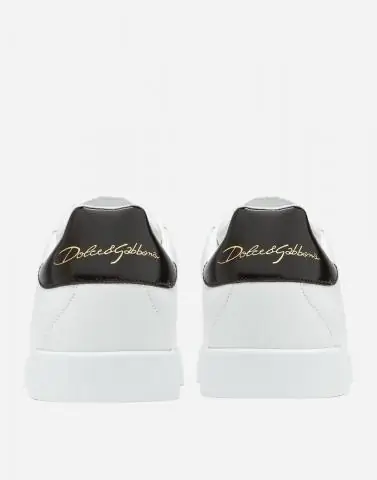
Sneakers are shoes that are comfortable and easy to wear for a walk, nature and even a date. If they get dirty, it doesn't matter. You can always wash them
How To Bleach The Soles Of Sneakers, Clean Them On Sneakers Or Other Shoes, Wash Them To White Using Various Methods + Photos And Videos
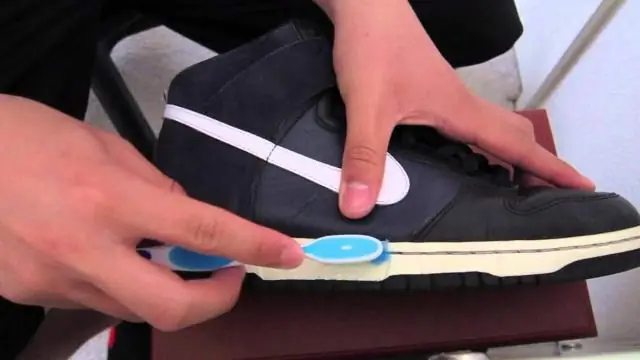
Shoes with white soles (sneakers, sneakers, etc.) - how to clean them quickly and easily. How to preserve the result after cleaning and protect it from dirt
How To Bleach Linen At Home Using Soda, Hydrogen Peroxide, Aspirin And Other Means, Methods For White Clothes
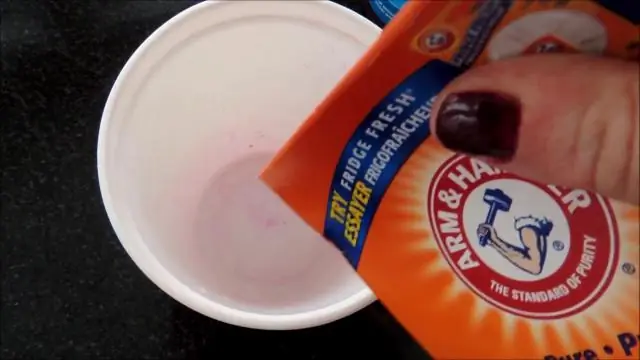
How to bleach linen at home: traditional and folk methods, machine in the machine and hand wash. Tips for bleaching fabrics
How To Wash Socks At Home, Especially For Different Materials, Manual And Machine Methods, How To Wash White Socks
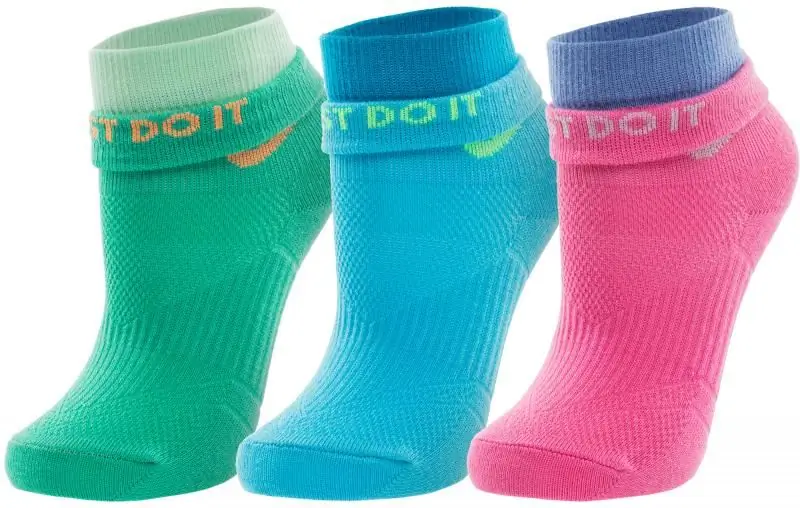
How to wash white, black and colored socks. Effective ways to remove stains by hand and in a washing machine. How to wash children's socks from various dirt
How To Bleach Sneakers, Sneakers And Other Shoes At Home In Different Ways + Photos And Videos
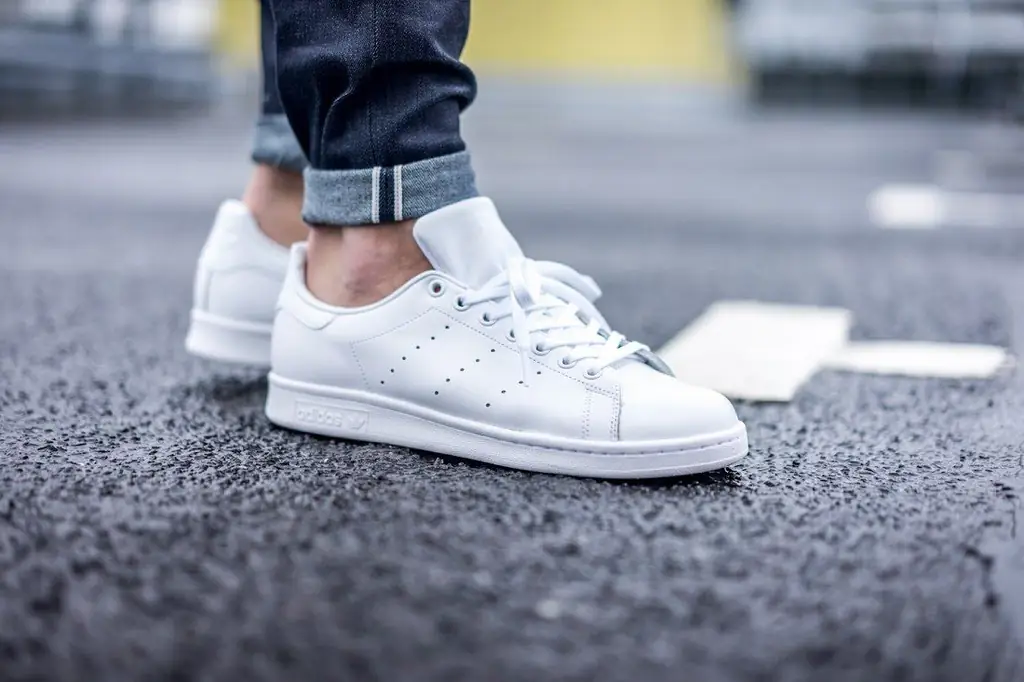
How to bleach sneakers, sneakers and other shoes at home: tips and videos. Different ways with and without washing. Instructions. Photo and video
